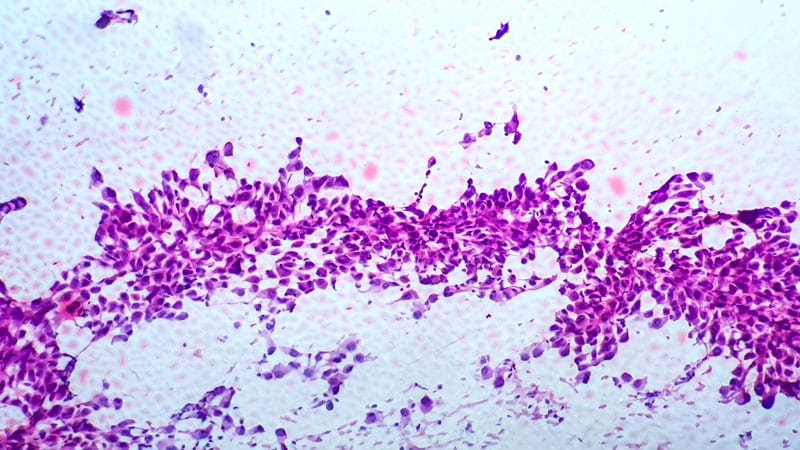TOPLINE:
In patients with recurrent non–small cell lung cancer (NSCLC), salvage thoracic reirradiation prolonged overall survival and progression-free survival. Consolidative immunotherapy following reirradiation further improved overall survival, locoregional control, and freedom from distant metastasis.
METHODOLOGY:
- Many patients with unresectable locally advanced NSCLC who receive definitive chemoradiation experience intrathoracic locoregional failures or recurrences. Treatment guidelines recommend systemic therapy, but some research indicates that thoracic reirradiation is an “attractive” option alone or alongside consolidative immunotherapy.
- Researchers analyzed outcomes in 130 patients with NSCLC (median age, 66 years; 51% women) who received definitive salvage thoracic reirradiation for isolated intrathoracic locoregional recurrence between 2011 and 2021.
- Patients received proton beam therapy (88%) or intensity-modulated radiotherapy to doses of 60-72 Gy in 1.8-2.0 Gy fractions. Concurrent chemotherapy was administered to 83% of patients, and 20% received consolidative immunotherapy.
- Primary outcomes were overall survival, progression-free survival, and toxicity. Other outcomes included rates of locoregional failure and distant failure.
TAKEAWAY:
- In the overall cohort, median overall survival was 17.4 months and median progression-free survival was 8.1 months. The 3-year cumulative incidence of distant failure and locoregional failure was 44% and 46%, respectively, and the 3-year overall survival was 25.9%.
- In an unadjusted analysis, patients who received consolidative immunotherapy after reirradiation demonstrated better median overall survival than those who received reirradiation alone (27.8 vs 15.8 months; P = .035) and locoregional-free survival (22.8 vs 8.8 months; P = .009).
- In a multivariable analysis, patients who received consolidative immunotherapy (20%) had significantly lower rates of locoregional failure (hazard ratio [HR], 0.31; P = .008) and numerically improved but nonsignificant overall survival (HR, 0.56; P = .065) and distant failure (HR, 0.54; P = .085).
- Compared with locoregional relapse, isolated regional recurrence after initial radiotherapy was associated with improved overall survival (HR, 0.59; P = .044). Patients who were hospitalized within 90 days of reirradiation had significantly worse overall survival (HR, 2.03).
- Overall, 26.7% of patients had nonhematologic toxicities of grade 3 or higher, and 6.9% of patients had grade 5 toxicities. A total of nine deaths were “likely” or “probably” related to reirradiation; four of these deaths were related to airway fistula or rupture.
IN PRACTICE:
“Thoracic reirradiation for locoregional recurrence of NSCLC has shown to be a promising treatment strategy with improved clinical outcomes and acceptable treatment toxicity. Immune checkpoint inhibitor consolidation after reirradiation is associated with improved oncologic outcomes,” the authors wrote.
SOURCE:
This study, led by Jenna Rocchetti, Perelman School of Medicine, University of Pennsylvania, Philadelphia, was published online in Radiotherapy and Oncology.
LIMITATIONS:
The study’s retrospective nature and single-institution design limited its generalizability. Treatment heterogeneity and inconsistent documentation affected toxicity assessment. Patients receiving immunotherapy were treated more recently and may have benefited from improved supportive care.
DISCLOSURES:
This study did not receive any specific funding. The authors reported having no conflicts of interest.
This article was created using several editorial tools, including AI, as part of the process. Human editors reviewed this content before publication.
Source link : https://www.medscape.com/viewarticle/thoracic-reirradiation-attractive-option-recurrent-nsclc-2025a1000bqc?src=rss
Author :
Publish date : 2025-05-14 12:57:00
Copyright for syndicated content belongs to the linked Source.
